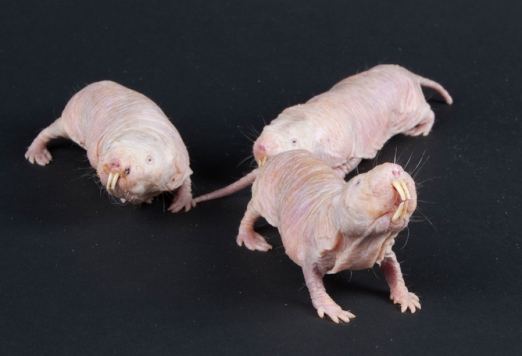
At the moment, the infamous coronavirus is spooking the human population with ruminations of pandemic crisis. Something that became apparent was the increase in xenophobia against the Asian community. This is due to the origination of the virus in Wuhan, China. This reminded me of what I’ve learned about the evolution of xenophobia, as a potential protective factor against pandemics. It is obvious that avoidance of infected people or closing national borders (effectively nationalism) would protect against the virus to some degree. In this way, the xenophobia may act as a cultural quarantine mechanism of sorts, sometimes known as the behavioral immune system. In the most strange way, the evolution of xenophobia becomes increasingly inevitable with the altruistic species. This post will explore the evolution of altruism, how it leads to the evolution of xenophobia, and how eusocialism may go hand-in-hand with Nazism (let’s avoid getting to this point during this coronavirus issue, please).
While it might make sense for people to be reasonably cautious around potentially infected individuals, it is completely unreasonable the way that racist memes are emerging. We should not socially permit the xenophobia trend that seems to be getting by, as if it is socially acceptable in this heated climate. A NY Times writer noted that this coronavirus racism trend is similar to the way Jewish people were scapegoated for the black plague.
Now, on to the evolutionary theory of Pandemic Xenophobia.
One of the more well-received posts on this blog is Xenotypy. The concept of that post was that humans relate to and favor those who are similar to them and that some amount of genes we have are related to our tendency to be exploratory, open to new experiences, and ultimately deviate from the homogeny of the culture. These genes were associated to Neanderthals, the tendency to travel, ADHD, and schizophrenia. Neanderthals formed smaller social tribes than humans and Xenotypy argues that the genes related to travel and openness may be constantly exiled out of more stable and homogenous societies, either pushed out through ostracization for their weirdness and nonconformity or by choice to leave due to boredom or social tension. The idea was that xenophobic genes would select for similarity, leading to the evolution of a progressively homogenous and conflict free society, at the loss of diversity and the benefits of the exploratory nature of these genes.
I’ve recently learned that the eusocial naked mole rat exhibits profound xenophobia and it blew my mind. The memory of Xenotypy’s concept of Marxist Evolution was brought to the forefront of my imagination and epiphanies spilled out.
We will begin with Hamilton’s rule.
Don’t worry, we won’t be doing math in the article.
rB > C
Hamilton’s rule is an equation meant to predict how likely one is to act altruistically towards another. The r denotes relatedness of an individual to the other, B is the reproductive benefit one gets by being helped, and C is the reproductive cost one pays to perform the act. Taken together it means that the relatedness times the benefit of an act must be greater than the cost of the act, for the act to be worth doing. If you help others who have copies of your genes (family, siblings, those who have more similar genes) then you are effectively promoting the survival of your genes. In organisms, the relatedness is likely determined by trait similarity to the self, both physically and behaviorally. This is known as kin selection.
Kin selection provides a great solution to explaining the most hyper-altruistic species’ evolution. Consider ants, where many workers help the queen’s fitness despite never getting to breed, ultimately having no fitness. How could such a state evolve? One possibility is through kin selection, where one helps one’s own genes spread through helping others who share the same genes, those who are related.
There is an odd problem with this though. The fact that individual’s with trait-similarity to others gain the benefit of altruism from others, means that trait similarity will be selected for. The species will have selection pressure to exploit the altruism granted by genetic similarity. There will be some pressure against this, due to the negative consequences of inbreeding, but there still exists the selection pressure for relatedness when altruism evolves through kin selection. Perhaps an organism could evolve to feign similarity in order to gain the benefits of altruistic support from other members. The increasing evolutionary trend towards exploiting altruism would favor true homogeny as well, if Hamilton’s rule is true. The evolution of this selection would lead an organism to eusocialism where homogeny thrives and a seeming socialist hyper-altruistic species emerges. Agreeability maximizes when everyone shares the same psyche, much like the notion that twins have a kind of special bond.

The naked mole rat is a eusocial species that live in colonies underground. Their societies are structured with a queen and many clone-like workers. Only the queen rat breeds, something that is seen in bees and ants as well. Naked mole rats were found to be highly xenophobic, even towards individuals with small genetic differences. They detect colony membership based on scent and they are xenophobic towards those who smell different. Another eusocial group of species, the ants, also exhibit a high level of xenophobia. Both ants and naked mole rats are highly homogenous within their colonies. This homogeny may predispose a species to being wiped out more readily by foreign diseases. There has been cases of extreme viral sensitivity seen in naked mole rats as well.
This brings us back to the issue of pandemics. Heterogeny has the benefit of avoiding pandemics through variety of vulnerability to viruses and disease while homogeny means shared vulnerability to viruses, and thus pandemics. Consider the case of the common banana and Panama disease. The bananas we most commonly consume today are a monocultured product, meaning that they are all the same variety. Despite being bred to be disease resistant, their shared genes has put them at risk for total extinction from the Panama disease, because all of them are vulnerable. The story of altruism evolution is a story of monoculturing the species to maximize cohesion, cooperability, and socialization by virtue of relatability.
Sidenote: Does near-extinction of a species facilitate an evolutionary pathway to eusocialism via forced inbreeding? Perhaps eusocialism is the pathway in which a species almost dies out and then comes back to life, coping with the new problems, but also gifts, of shared genetics.
The vulnerability of colony collapse within a homogenous society will ultimately select for xenophobia because those eliminating the foreigners will protect the colony from collapse. This is similar to how colonizers brought diseases that wiped out native American people after contact. In the end, pandemics will influence evolution via survival of those who are resistant to disease or avoidant to disease. We are left with the loss of homogenous and xenophilic traits as this combination is too risky to survive, meanwhile the combination of homogenous and xenophobic traits will thrive, maximizing their power to exploit Hamilton’s rule, gaining increased altruism but ultimately becoming xenophobic monsters in order to accommodate the fatal error of the homogenous societies: disease and collapse vulnerability.
This pattern of maximizing selection for homogeny to exploit altruism and the eventual emergence of xenophobia and eusociality sounds really familiar. . .
Nazism and Eusocialism
The eusocial naked mole rat seems Nazi-like in many ways. Most obviously, the naked mole rats are xenophobic and will attack those who don’t fit into the tightly homogenous colony. Most fascinatingly, naked mole rats have a quasi-eugenics system in which the queen enforces fertility suppression using a drug secreted through her pee. This may allow the queen to consciously select only the mates with highly desirable qualities to breed with. Naked mole rats also are immune to pain, don’t seem to age, have some degree of cancer-immunity, can survive and even go unharmed in oxygen-deprived environments for up to 18 minutes, and are cold-blooded, unlike most other mammals. One could wonder if these traits were hand-selected by the queens over many generations in a eugenic manner.
Nazis were pre-occupied with ideas that outsiders were filthy or disease-ridden. It is thought that disgust sensitivity may have been a key to Hitler’s ideologies. This is good reason to be careful during these situations like the one we are faced with the coronavirus. We wouldn’t want this to be the beginning of World War III.
National socialism (nazism) may be a transitionary phase to human eusocialism. This is a bit scary to think about, but it seems incredibly fitting. Nazism involved racial purity, which is obviously xenophobic and pro-homogenous. Often the Nazi belief system involves eugenics. Eugenics may start as a clearing of unfitting genes, eventually with homogeny dominating, or even a form of technological eusocialism. Technological eusocialism would involve sterilization of those whose genes do not benefit the society and artificial selection of genes that are considered good. This may take form as soft-eugenics in the case of sperm donors and birth control. In it’s most maximized form we might expect clones of ‘perfection’ and human evolution driven by gene-editing. To keep with the naked mole rat metaphor, one could imagine a future where a virus is produced that sterilizes humans and only those who are given access to a vaccine are permitted to breed.

This is what the Nazi race would have looked like if their eusocialist/eugenic plot was successful.
Nazism arose during the Great Depression which may have been a critical factor for it’s development. If Nazism is observed as an extreme form of right-wing ideology, we might apply some of the environmental mediators linked to right-wing ideology also to Nazism. Perceptions that the world is dangerous and threatening has been associated to conservativism (an argument for why this failed to replicate is here). Low openness to experience has been associated to the stress hormone cortisol, right-wing political ideology, and authoritarianism. In Adultification I’ve explored how conservativism is a scarcity mindset while liberalism is an abundance mindset, which helps to make sense of the emergence of Nazism from the Great Depression.
Another overlap that conservatism has with naked mole rats is the aversion to pathogens. It makes sense that disease and health would plummet dramatically during the living conditions of the Great Depression, triggering deeper concerns for guarding of one’s health. There is even evidence that parasite prevalence predicts authoritarian attitudes.
The concept known as Behavioral Immune System has been posited as an explanation for xenophobia as a protective measure against disease spread. Disgust sensitivity, which links to right-wing ideology (an argument for why this study didn’t repliace is here), is used to explain differences in opposition to immigration, which is also a right-wing tendency. As mentioned before, the Great Depression was likely key to the rise of Nazism, a form of right-wing extremism possibly due to the stressful depressing times. Depression was found to increase signals of disgust, which makes sense as one may be extra vulnerable to sickness or threats during hard times. The perception that times are hard may be key to the increased sensitivity to disgust, possibly as a defense mechanism. While one is sick, sleep-deprived, malnourished, or other vulnerable factors we might expect depression and disgust sensitivity to both increase.
Since behavioral similarity, essentially conformity may underlie the distribution of altruism, it brings us back to the socialist evolution concept described in Xenotypy.
From Xenotypy on how conformity could drive evolution:
“
Those in a settled society would select against these genes because the increase in learning and tolerance would cause a more rapid development of intolerance to repetition. Intolerance to repetition is just the increased tolerance to the rewarding aspects of that task, as previously described. This intolerance to repetition would undermine the development of structured societies, where the human (non-Neanderthals) would better excel, at the cost of increased xenophobia, nationalism, and decreased learning speed. The decreased learning speed is precisely why the humans would be better adapted towards a settled society, where one can enjoy more repetitious tasks without as much reduction in rewarding sensation. And, as previously shown, the link of DRD4 7R and addiction is also based on this tolerance to reward effect.
Equality of outcome means dividing life quality equally to the total population. Individual life quality is enhanced the less people there are. This incentivizes exterminating those with seemingly less collective utility, because it directly rewards population reduction. Our xenophobia and biases may take hold and select mostly for genes of those we can relate with. There would be a selection based on collective utility as well, where the lazy, the weak, the seemingly useless will all be exterminated because of their detriment to others wellbeing. This causes a novel type of evolution and selection. The stigmatized groups will have their genes erased. The human hive would become more sentient as individuals are selected for their utility in a collectivist society. This is what ants have undergone. This is also a mechanism for auto-domestication of the human species since culture would almost certainly select for agreeable and conscientious types.
This (socialist evolution) would occur via stigmatizing the traits of the individualists by the collective. This would result in less reproduction of these traits and even potentially violence or mistreatment that make it near impossible to reproduce or be successful. Those who are most suited for the collective would have a higher chance to breed, and the gene pool will increasingly slide away from the traits of individualism. This involves the dynamics of xenophobia and xenophilia as well. Where humans would evolve to become increasingly xenophobic with collectivism, stigmatizing individualists as mentally ill. Genes not suited towards the lifestyle in collectivism would be stigmatized.
“
Radical Empathy

For an effective society we must retain radical empathy with special attention towards those who we perceive to be different. Differentness in behavior seems to especially provoke feelings of threat, for example with veganism as described in Enigma Stigma. Radical empathy will become increasingly important as humanity globalizes and unifies. It must become one of the core focuses of social and political interaction or else we could be headed for catastrophe and extinction.
During this ongoing coronavirus hysteria we must remain calm and collected, focused on our goals as a species, and avoid toxic xenophobia. Transmission of the virus is already partly due to the way that infected people are not concerned with health or safety of strangers. This could only possibly worsen if we swap strangers with racists. Perhaps people will want to see racists become infected. The best course of action is to show empathy, possibly even promote support and concern for potentially infected populations. This does not necessarily mean exposing yourself to potentially infected people, but it certainly means to stop posting racist rhetoric.
Special thanks to the two patrons, Abhishaike Mahajan and Charles Wright! Abhi is also the artist who created the cover image for Most Relevant. Please support him on instagram, he is an amazing artist!
If you liked this, follow me on
If you’d like to support my projects check out this page.
MASS HYSTERIA UPDATE:
There is now an entire article on the updates, COVID-19: Mass Hysteria.
Violence against Asian Americans has begun. There have also been fraudulent flyers with fake WHO seals warning against going to Asian restaurants. The rationalization of the xenophobic people may be to scare Asian Americans from entering public space, due to threats of violence, thus reducing contact with imagined potentially infected peoples. It is assumed that the Chinese population would have more contact with Chinese foreign nationals. Since the virus has spread far beyond Asia, now in much of Europe as well, it is no longer reasonable to assume that the virus is localized to the Chinese population.
These paranoias I’m about to express may be a bit preliminary at the moment, especially with the ongoing mass hysteria afloat, but it is a concern we should keep in mind because we can’t let it progress too far. It’s been noted that the U.S. may struggle to deal with the virus especially because of the faulty health care system and class division. If the working class gets sick and they can’t work, all of the higher class that depends on the working class to function could be destabilized. The poor won’t be able to afford health care and the hospitals may fail to keep up with infections. The hysteria could send us into a drastic situation, because of the flawed health care system in the US. Perhaps China realizes this exploit and has hyped the virus in order to make U.S. society collapse under the unfolding mass psychosis. Perhaps this is distracting us during election times, with impeccable timing.
Could you imagine if the country suddenly adopted a socialist leaning health care system during this crisis? Can you imagine if Trump (or other) tried to take dictatorship of the country by offering closed borders (nationalism) and then health care for all (socialism) in order to cope with the pandemic? National Socialism is what Nazism means. Such a radical move would almost undoubtedly send us into WW3. Perhaps as people continue to get sick, increasingly in-need, an antihero will emerge to take advantage of the desperation, offering savior. For the sake of the speed needed to radically alter the government, dictatorship would be granted. This is all probably very unlikely, just fear-mongering, at least let’s hope so.
It’s funny how a political blog warning about the dangers of appeale to disgust and speculative understanding of evolution &genetics in politics… Does so via appeale to digust and a speculative understanding of genetics& evolution.
LikeLiked by 1 person
Funny point. Could you specify the ways in which the article is appealing to disgust? Was it the naked mole rat Nazi humor image? Do you feel it is anti-right rhetoric? Do you think the mere fact of mentioning disgust as a link to right-wing, is using disgust to appeal?
For the record, I think naked mole rats are fascinating.
It’s also worth noting that evolutionary psychology in general seems to be speculative in a sense.
My blog is not usually political, it is a neurobiology focused psychology blog that gets into social psychology at times. This post was inspired by an evolutionary psychology class I took in university as they taught about the concept of Behavioral Immune System and kin selection among many other topics mentioned here.
You’ll notice a lot of these ideas are not necessarily my speculations, there are citations you can click on statements that are made.
LikeLike
———————–
Disclaimer: Don’t let my opinion here discourage you from writing further, at the end of the day the standards I set might be too high. If think I’ve very likely written stuff myself which wouldn’t pass the level of scrutiny that I’ve addressed in regards to this one.
———————–
It appealed to disgust in several ways, at least that’s the feel I get, the most important are:
a) Taking the most hated/despised political entity as the target for your analogy.
If you wanted an example of a modern government that has:
1. One of the most strict border policy in the world, in that it requires a large fee and guide to enter the country for the vast majority of people and you can only remain for a short amount of time
2. A recent history of discriminating against and exporting minority ethnic groups (Nepalese and Indians)
3. A strong tendency to promote marriage and children only with “fellow countrymen”
4. All of this based partially on religious ethics of purity and cleansing
You could have taken Bhutan.
But Bhutan has archers, calm mountain villages, poor but well maintained and socially cohesive cities and pacifist buddhist monks and a government that promotes the idea of what amounts to happiness through providing basic needs to all and having strong communities over economic growth.
Not to say Buthan is all that great, I wouldn’t live there personally. But if you want to strong-man your argument use an example like this, not the natzi. The natzi provide an easy target via appeal to disgust because nobody likes natzis
b) Taking the analogy of the naked mole rat, obviously not the prettiest animal you could chose, but even if you think it best fits the analogy, the first and especially the second picture serve no point but to create disgust (maybe humor ? but you don’t phrase this as a humorous piece and the pictures are basically there to re-enforce the disgust narrative).
> It’s also worth noting that evolutionary psychology in general seems to be speculative in a sense.
As for this… I agree, that’s why I don’t think ev-pysch based analogies are relevant in dictating policy. Ev-psych fits the facts, it doesn’t make predictions, it’s not very reliable.
Also, I’m not necessarily attacking the ideas themselves, I’m just saying the way they are presented is basically one that straw-mans your null hypothesis, on top of that, let’s derive your null hypothesis based on your conclusion:
”
The best course of action is to show empathy, possibly even promote support and concern for potentially infected populations. This does not necessarily mean exposing yourself to potentially infected people, but it certainly means to stop posting racist rhetoric.
”
Based on this, the null hypothesis would be:
”
The best course of action is to show coldness, possibly even promoted violence and hatred for potentially infected populations. This does not necessarily mean exposing yourself to potentially infected people, but it certainly means your should engage in more racist rhetoric
”
Doesn’t that sound like a bit of a straw-man to argue against ? What kind of person would argue for that hypothesis ? It’s literally so vile under our current moral system it would basically be illegal to argue for it.
So basically you are appealing to biases in order to promote a point of view… that’s already the de-facto view of most people and of basically all people that might read this.
A better hypothesis to argue for would be “We shouldn’t stop flights to and from China during the pandemics and we should fly in the sick into our countries in order for them to be better treated”… because than you’d have to actually do some convincing.
For further reference as to why this kind of treatment of political viewpoints is not effective: https://slatestarcodex.com/2014/09/30/i-can-tolerate-anything-except-the-outgroup/ (Not, the “horrible racists” here represent the outgroup, you in-group are the people probably reading this)
For further reference arguing against why the best approach to a crisis like this is a very-rational perspective not empathy: https://www.goodreads.com/book/show/29100194-against-empathy.
LikeLike